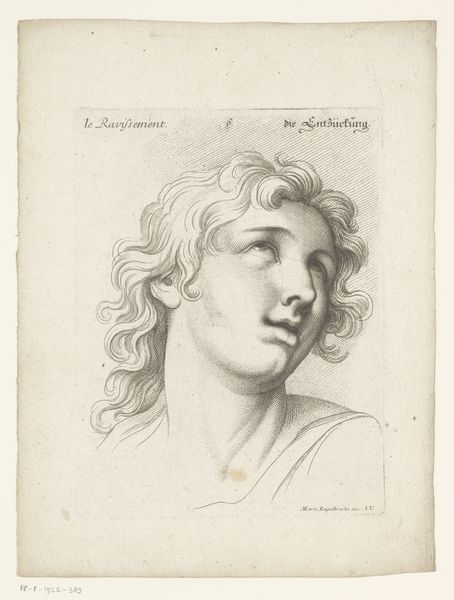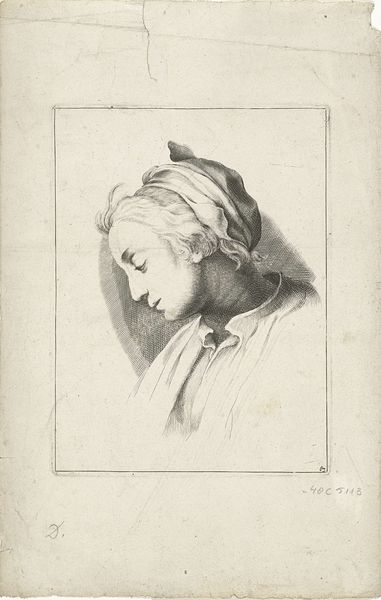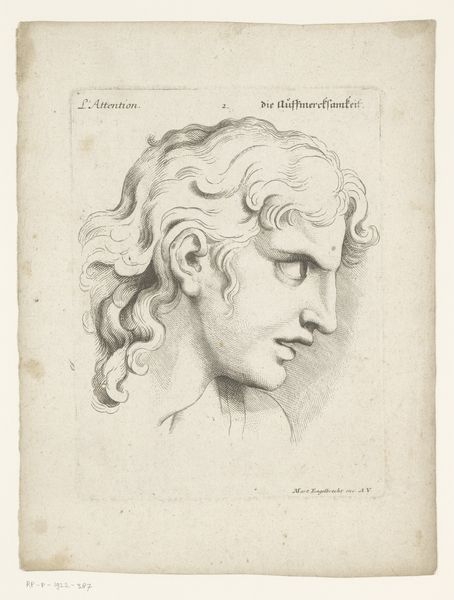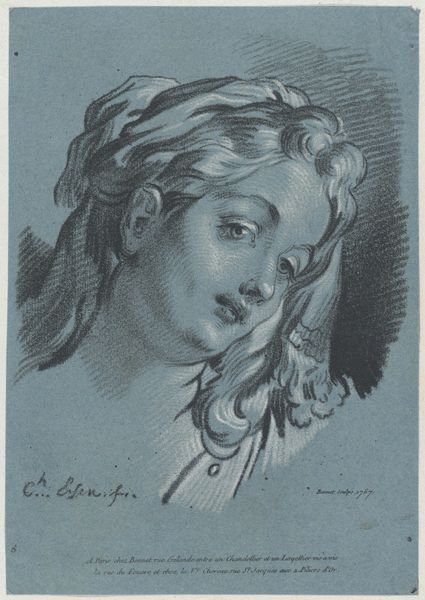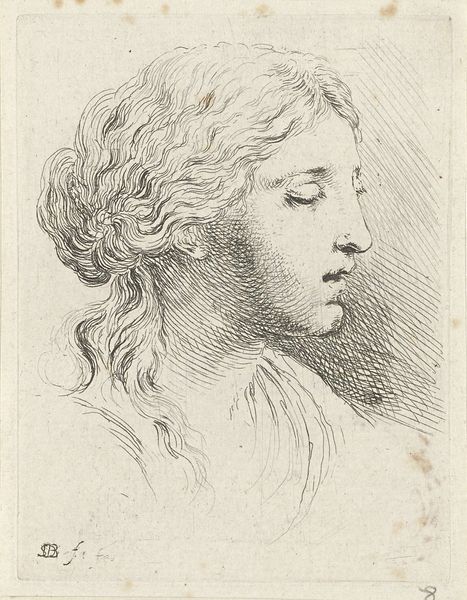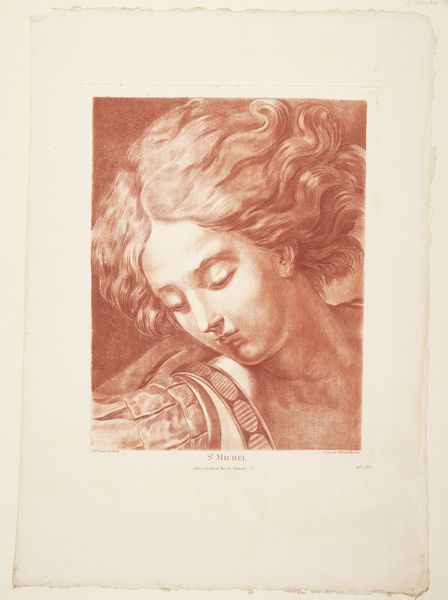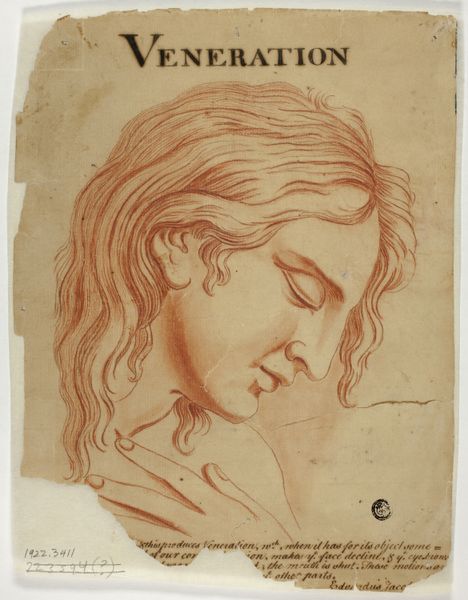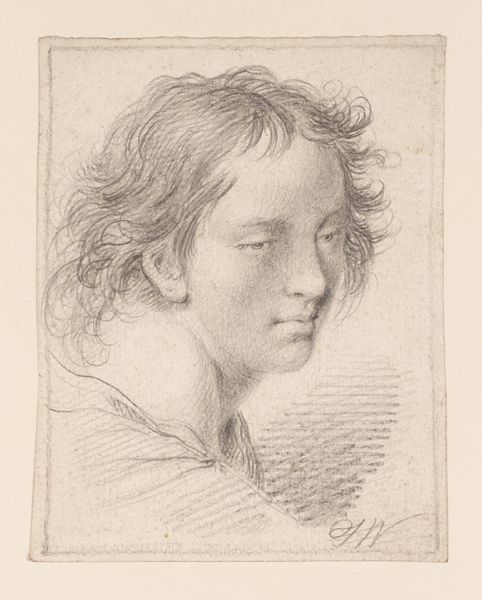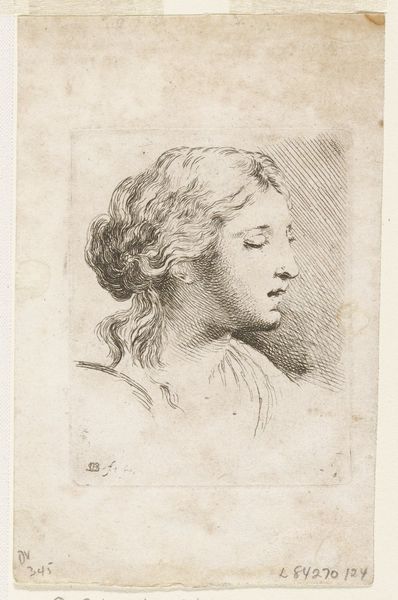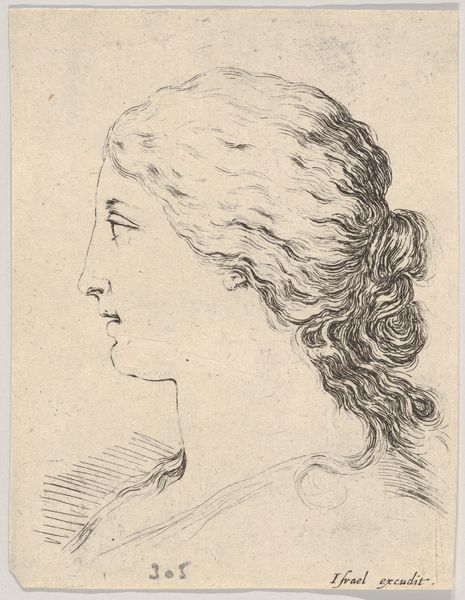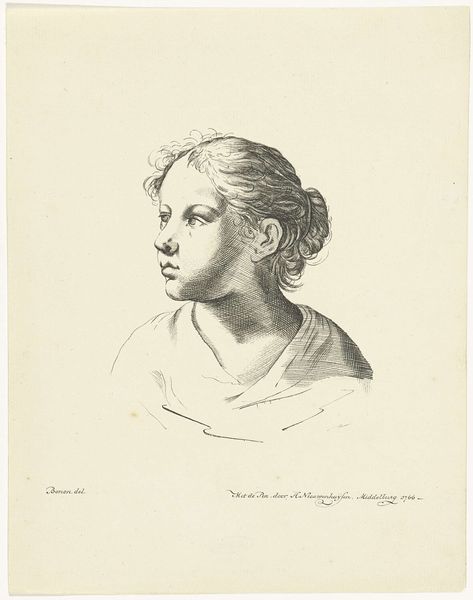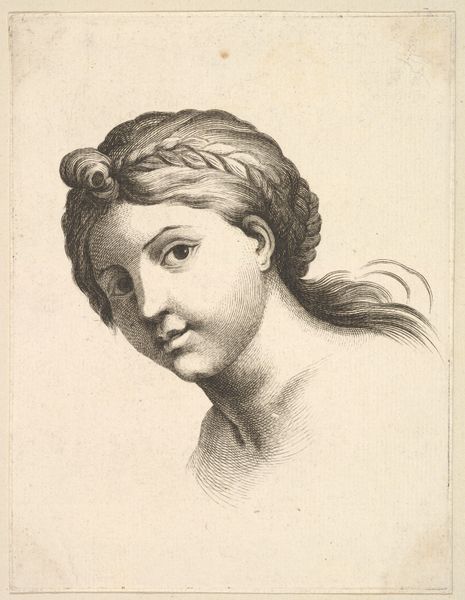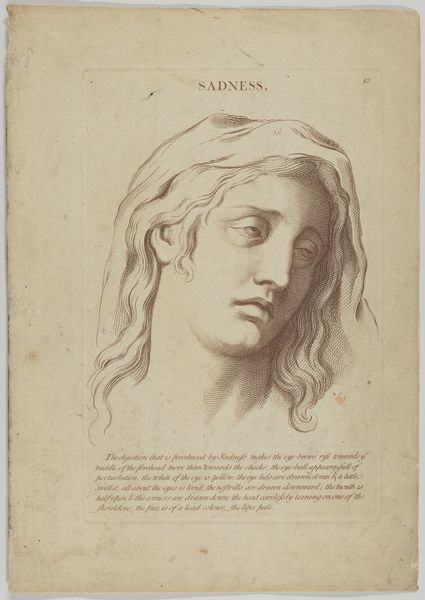
print, engraving
#
portrait
#
baroque
# print
#
line
#
engraving
#
realism
Dimensions: height 249 mm, width 189 mm
Copyright: Rijks Museum: Open Domain
Curator: Here we have "Hoofd van een vrouw in een staat van aanbidding," or "Head of a Woman in a State of Adoration." It was likely created sometime between 1732 and 1738 by an anonymous artist. What are your initial thoughts? Editor: It feels incredibly serene. The line work, being an engraving, almost softens the devotional mood, adding an introspective quality to the piece. Curator: This print exemplifies baroque sensibilities while illustrating a complex figure. Her posture and expression can be examined in relation to contemporary ideas about female piety and emotion during the early 18th century. Do you find the artistic handling reflective of the values instilled within this time period? Editor: Definitely. The delicacy achieved with the engraving tool transforms the rather typical religious portrait. Consider the laborious act of engraving, how this reproductive medium made devotional imagery accessible to the masses; that intersection of artistic labor, devotion, and consumption is compelling. Curator: Absolutely. And consider the interplay between "veneration," as indicated, and subjugation, perhaps. Religious piety in art and social power structures. I mean, is this really free choice or coerced? Her downcast eyes evoke humility, yet they could also indicate resignation to patriarchal expectations. Editor: It brings up some intriguing notions about the process of both spiritual and material replication. Engraving involves direct labor to transfer an image, making the sacred easily produced and available on a larger scale, it democratizes worship, but at what cost in terms of labor? Curator: Exactly! Her submission becomes infinitely replicable and infinitely accessible. Considering the accessibility afforded by engravings, did that shift power away from exclusive religious entities, impacting social behaviors regarding religion and its material worth? Editor: In this way, artistic expression provides an intriguing avenue to discuss labor conditions that were shaping societal and economic foundations back then. That kind of tension makes you contemplate so much beyond just aesthetic appreciation. Curator: It is a reflection on how individual identities, even in ostensibly private moments of worship, intersect with public ideologies and systemic norms. It gives this anonymous portrait profound social weight. Editor: Yes, shifting perspective away from individual adoration and shining a spotlight on this interplay between image production and its larger circulation creates an important dialog. Curator: Ultimately, approaching artworks from numerous angles is important in getting a deeper contextual understanding. Editor: Definitely a worthwhile exercise in recognizing that our relationship with art and faith goes far beyond simple reflection.
Comments
No comments
Be the first to comment and join the conversation on the ultimate creative platform.
